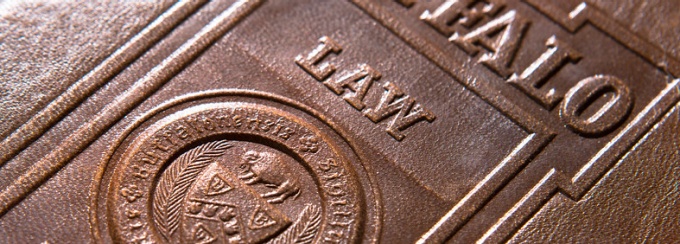
Buffalo Law Review amends associate selection criteria to promote diversity
With the goal of making the Buffalo Law Review the best it can be, its student editors have made a significant change in how new associates are selected—one that will diversify its membership and encourage a rich mix of voices at the table.
The Law Review has long been a showcase for many of UB Law’s talented students. Now, in its second year with an editor dedicated to diversity, equity and inclusion, it has amended its associate selection criteria to embrace the value that a greater breadth of life experiences can add to the journal.
UB Law is far from alone in that initiative. Indeed, a survey published last year in the Columbia Law Review looked at the law reviews of the nation’s 20 top law schools and found that 16 of them had adopted some form of structural changes to encourage diversity on their boards.
Beyond those numbers, the Columbia article also found that a more diverse staff led to better-quality scholarship, as measured by how often scholars cited work in those law reviews. Looking at nearly 13,000 articles published over 60 years, it said, “We find that law reviews that adopt diversity policies see median citations to their volumes increase by roughly 23 percent in the ensuing five years.” Further, it said, “although diversity policies for selecting editors may only result in a few additional diverse law students selected as editors, research suggests that even minimal increases in diversity can radically change group decision-making.”

Peter C. Evancho ’23, Diversity, Equity and Inclusion Editor, Buffalo Law Review
At UB Law, the impetus for the policy shift came from the journal’s current DEI editor, third-year student Peter Evancho.
“Most law reviews are seeking to do better at this,” Evancho says. “Other law reviews have DEI editors or committees that champion such initiatives. And these are the two most important things we do: publishing legal scholarship and onboarding our next class of associates.”
It’s that selection process for new associates—typically students at the end of their 1L year—that the change to the Law Review’s constitution addresses. Previously, those students would submit their 1L grades, a case note essay and a find-the-errors test on Bluebook style. A single team of editors would grade and assess the candidates.
Beginning with next year’s class, Evancho says, applicants will still submit grades and a case note essay, with the Bluebook component becoming part of that case note. In addition, they’ll provide a statement “explaining how their experiences have equipped them to contribute to a diverse and inclusive community of inquiry.”
“We want it to be broad and open-ended,” Evancho says. “Applicants can highlight any part of their background and experience. The question is, what intangible factors do you bring?”
In addition, applicant packages will be evaluated by three separate teams of editors, to ensure impartiality. The journal’s DEI team will review each applicant’s diversity statement.
The proposal came out of conversations that Evancho and his ad hoc committee—fellow board member Emily Thompson and second-year associates Racquel Bozzelli, Juliette Miranda and Nora Colley—had with school administrators and leaders of several student affinity groups. “Everybody agreed that there were benefits in revamping the selection criteria,” he says.
And in addition to making a better publication, Evancho sees the change as solidifying the Law Review’s commitment to the wider law school community. “We want this to provide more perspective and points of view on the board and in our meetings,” he says, “to improve the organization and make it more impactful and representative of our student body.”